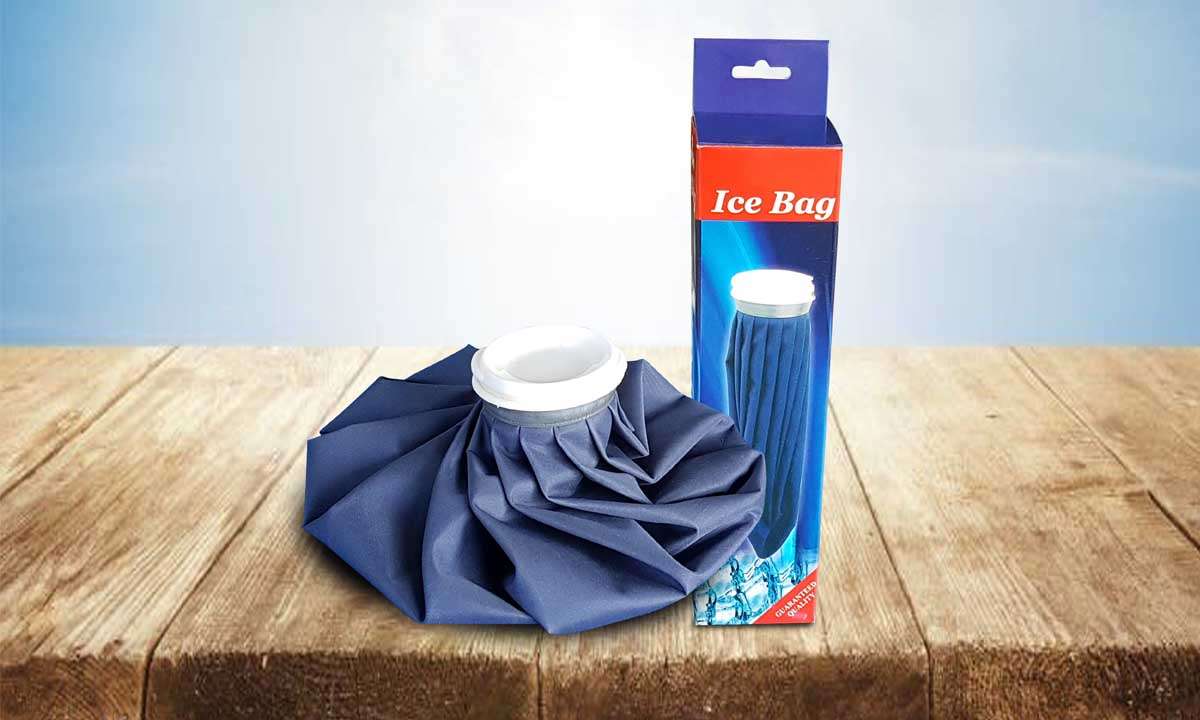Ice bags are flexible, watertight bags designed to hold ice or cold water and are commonly used for cold therapy. They are applied to specific parts of the body to reduce swelling, inflammation, or pain caused by injuries, strains, sprains, or headaches.

Key Features:
- Material: Typically made of rubber, plastic, or fabric with a water-resistant inner lining to prevent leaks.
- Shape: Designed to conform to the body for effective cold application. Some have screw-top openings for easy filling and sealing.
- Size: Available in various sizes to target different areas of the body.
Common Uses:
- Sports injuries: To minimize swelling and numb pain after an acute injury.
- Fever management: Placed on the forehead or neck to cool down the body.
- Chronic pain relief: Used for conditions like arthritis.
- Migraine relief: Applied to the head or neck.
Modern versions may include reusable gel packs or come in the form of pre-filled disposable packs for convenience.
Uses of Ice Bags
Ice bags are versatile tools commonly used for cold therapy and other cooling needs. Below are their primary uses:
Medical Uses
- Pain Relief: Numbs pain from injuries such as sprains, strains, or bruises by reducing nerve activity.
- Swelling Reduction: Minimizes inflammation caused by soft tissue injuries.
- Injury Recovery: Helps with muscle recovery and healing after sports or physical activities.
- Migraine Relief: Applied to the forehead or back of the neck to soothe headaches or migraines.
- Fever Management: Used to cool down the body during high fevers.
Sports and Fitness
- Post-Workout Recovery: Reduces muscle soreness and prevents swelling after intense exercise.
- Acute Sports Injuries: Used immediately after injuries like sprained ankles or pulled muscles.
Chronic Conditions
- Arthritis: Provides relief from joint pain and inflammation.
- Tendonitis or Bursitis: Alleviates discomfort in tendons or joints.
Everyday Aches
- Toothaches: Eases pain and reduces swelling after dental procedures or injuries.
- Minor Burns: Applied to first-degree burns to soothe the skin (after initial cooling with water).
Cosmetic and Wellness Uses
- Puffy Eyes: Reduces swelling under the eyes.
- Skin Tightening: Used in beauty routines to improve skin tone and reduce puffiness.
Other Applications
- Cool Relief in Heat: Provides comfort during hot weather.
- Storage and Transport: Keeps perishable items cool temporarily, similar to ice packs.
Ice bags are simple, portable, and effective, making them a staple in first-aid kits, sports facilities, and homes.
Benefits of Ice Bags
The benefits of using ice bags are numerous, particularly for physical recovery and pain management. Here’s a detailed breakdown:
Pain Relief
- Ice numbs nerve endings, reducing the sensation of pain in injured areas.
- Provides immediate relief for conditions like headaches, migraines, and toothaches.
Reduces Swelling and Inflammation
- Cold therapy constricts blood vessels, limiting blood flow to the affected area and decreasing swelling.
- Useful for injuries like sprains, strains, and bruises.
Speeds Recovery
- By controlling inflammation, ice therapy promotes faster healing of soft tissue injuries.
- Often used by athletes post-workout to minimize delayed onset muscle soreness (DOMS).
Manages Fever
- Ice bags applied to the forehead, neck, or wrists help lower body temperature during high fevers.
Non-Invasive and Natural
- Provides a simple, drug-free method for managing pain and inflammation.
- No significant side effects when used appropriately.
Customizable and Convenient
- Can be used on various body parts, adapting to the shape of the affected area.
- Portable and easy to use at home, on the field, or during travel.
Cost-Effective
- A reusable solution for a wide range of medical and cosmetic needs, making it economical.
Cosmetic Benefits
- Reduces puffiness under the eyes and soothes irritated skin.
- Improves circulation when used for short intervals in beauty routines.
Cooling Relief in Hot Weather
- Provides a quick and comfortable way to cool down during high temperatures.
When used correctly (e.g., with a cloth barrier to prevent frostbite), ice bags are a highly effective and versatile tool for health and wellness.
Types of Ice Bags
There are several types of ice bags, each designed for specific needs and preferences. Here’s an overview of the main types:
Traditional Ice Bags
- Material: Made of rubber or fabric with a waterproof lining.
- Design: Comes with a screw-top or twist-on cap for easy filling.
- Use: Commonly used for medical or first-aid applications; ideal for various body parts due to flexibility.
Instant Ice Packs (Disposable)
- Material: Contains chemicals that produce a cold reaction when the bag is squeezed or shaken.
- Design: Single-use and disposable, no need to pre-freeze.
- Use: Convenient for emergency situations, travel, and sports injuries; ideal for on-the-go relief.
Reusable Gel Ice Packs
- Material: Filled with a gel substance that can be repeatedly frozen.
- Design: Retains flexibility when frozen, allowing for a comfortable fit on body contours.
- Use: Popular for everyday injuries and muscle soreness; reusable, making it economical.
Cold Therapy Wraps
- Material: Comes with built-in gel packs that can be chilled.
- Design: Often designed as sleeves, wraps, or bands to target specific body parts like knees, shoulders, or elbows.
- Use: Ideal for localized treatment of sports injuries, arthritis, or chronic pain.
Ice Bags with Compression
- Material: Fabric or neoprene with compartments for ice or gel packs.
- Design: Provides both cold therapy and adjustable compression to aid with swelling.
- Use: Useful for conditions that benefit from both cold and compression, such as joint injuries and post-surgical recovery.
Ice Blankets or Sheets
- Material: Consists of multiple cells that freeze into flexible, flat sheets.
- Design: Lightweight and adaptable; can cover larger areas.
- Use: Ideal for cooling larger areas of the body or to be used as a cooling mat in hot weather.
Cold Gel Sleeves
- Material: Gel-filled, stretchable sleeves that provide 360° cold therapy.
- Design: Fits comfortably on joints like knees or elbows.
- Use: Ideal for treating joint inflammation or soreness after exercise.
Dry Ice Bags
- Material: Made of heavy-duty plastic that can safely contain dry ice.
- Design: Often used for prolonged cooling needs.
- Use: Primarily for transporting or preserving items rather than for direct application on the skin.
Each type has unique features suited to different purposes, from emergency care and sports injuries to chronic pain and therapeutic recovery.

